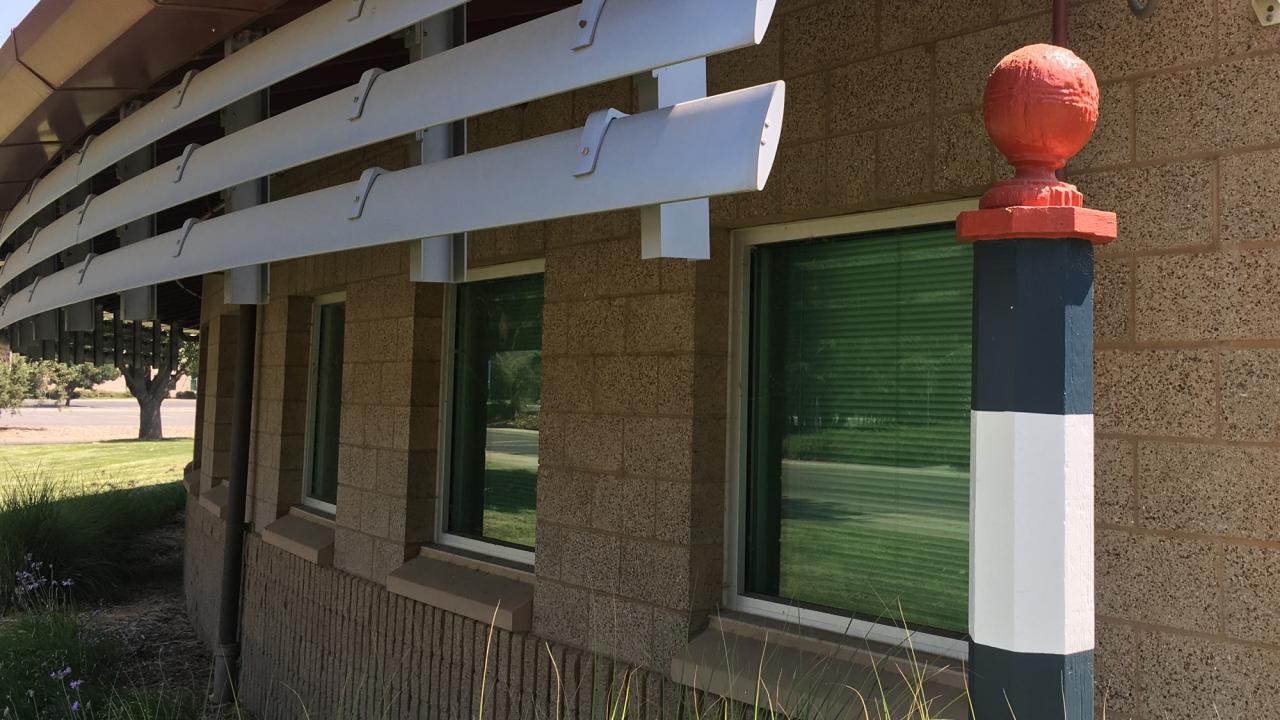The black-and-white-striped poles around the outside of the Maddy Equine Lab are once again fit for the Sport of Kings.
The Kenneth L. Maddy Equine Analytical Chemistry Laboratory serves as the primary laboratory for drug testing of horses that run at California’s permanent racetracks and seasonal fair venues. This testing is conducted to ensure that performance-altering drugs have not been administered and that permitted, therapeutic medications are being given properly.
The lab opened in July 2000. However, officials moved up the dedication to November 1999 so Kenneth L. Maddy could attend. The former state legislator, an avid horseman and supporter of veterinary education, was in ill health at the time and would die of cancer three months later.
The poles are 1/16-mile markers from the Tanforan Racetrack, which operated from 1899 to 1963 in San Bruno, just south of San Francisco. J.D. Wheat, equine surgeon and founding faculty member of the School of Veterinary Medicine, gifted them to the Maddy lab project.
The Building Maintenance Services’ Paint Shop recently refurbished these artifacts of California's horse racing history. Chase Fowler, who received the assignment, knew the importance of the poles and was excited about the task.
He and Danny Garza, Paint Shop lead, first looked for deterioration of the poles. Garza said one was completely rotted, up to the red ball on top. Steps had to be taken to not only glue it all back together but to preserve what was left.
Fowler and Garza took care to restore the poles to their past glory, rebuilding rotted areas and using their expertise to perfectly color-match all three colors on the poles.
Racetrack distance poles have black striping for 1/16-mile markers (like the Maddy lab’s), green striping for 1/8 mile (or furlong) and red striping for 1/4 mile.
This blog highlights and summarizes an initial article by Cassandra Ng, a fourth-year communication major and professional writing minor and a Facilities Management student intern. Read the full article here.
